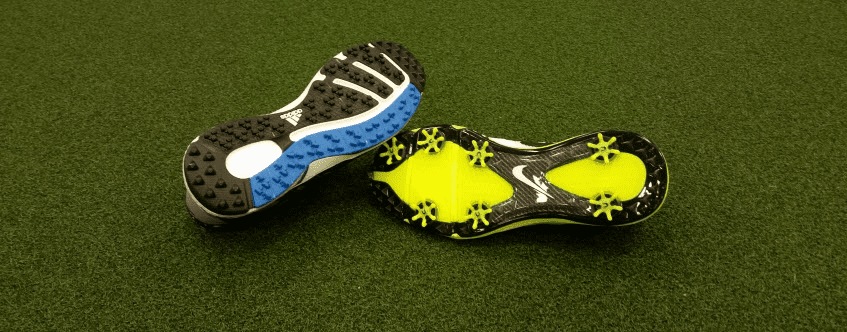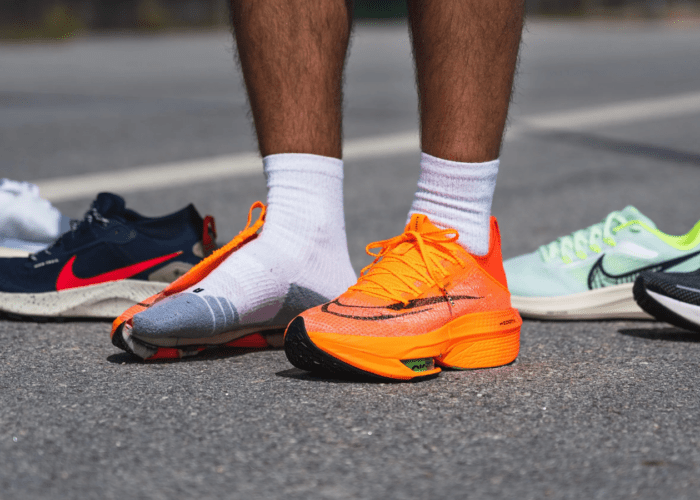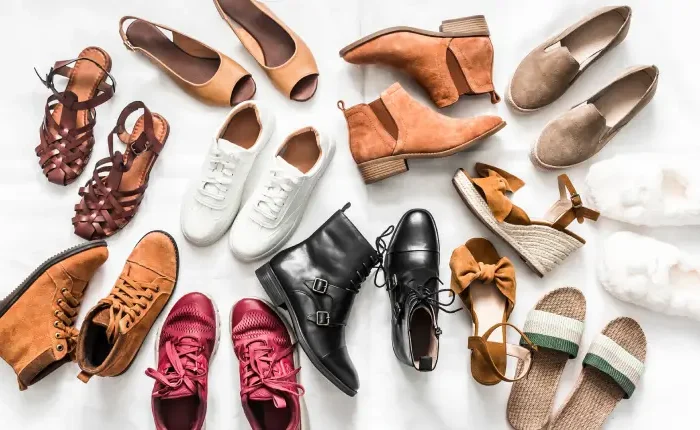Choosing the right golf shoes is no small task, especially when deciding between spiked and spikeless golf shoes. Both have their perks and understanding the details can help you make an informed decision tailored to your game and preferences. Let’s take a closer look at these two types of shoes to settle the debate and help you find the perfect fit for your golf needs.
- What Are Spiked Golf Shoes?
- What Are Spikeless Golf Shoes?
- Spiked vs. Spikeless Golf Shoes: A Side-by-Side Comparison
- Pros and Cons of Spiked Golf Shoes
- Pros and Cons of Spikeless Golf Shoes
- How to Choose Between Spiked and Spikeless Golf Shoes
- When Should You Own Both?
- Caring for Your Golf Shoes
- Expert Opinion
- Final Thoughts: Which Is Better?
What Are Spiked Golf Shoes?
Spiked golf shoes, as the name suggests, feature cleats or spikes on the outsole designed for enhanced grip. These spikes are often made of soft, replaceable materials like rubber or plastic, offering excellent traction without damaging the greens.
Key Features of Spiked Golf Shoes
- Enhanced Traction: The spikes provide a firm grip on wet, uneven, or slippery surfaces, making them ideal for challenging conditions.
- Stability for Powerful Swings: If you have a high swing speed, spiked shoes help anchor your feet, reducing the chance of slipping.
- Replaceable Spikes: Over time, spikes wear out, but the ability to replace them means the shoes last longer.
When to Use Spiked Golf Shoes
- Wet Weather: Rainy days or dewy mornings often leave the course slippery. Spiked shoes provide the grip you need.
- Hilly Courses: If your course has uneven terrain, the extra traction will come in handy.
- Aggressive Players: Golfers with powerful swings can benefit from the added stability.
Popular Spiked Golf Shoes
Brands like Adidas, Nike, and FootJoy offer cutting-edge spiked shoes with features like lightweight materials, waterproof construction, and ergonomic designs. For example, Adidas’ TOUR360 models are a favorite among professionals for their combination of comfort and performance.
What Are Spikeless Golf Shoes?
Unlike their spiked counterparts, spikeless golf shoes have flat soles with dimples or rubber studs. These features provide grip without the need for traditional spikes, making them versatile on and off the course.
Key Features of Spikeless Golf Shoes
- Versatility: These shoes are just as comfortable on the course as they are at the clubhouse or even running errands.
- Lightweight: Without the added weight of spikes, these shoes are often lighter and easier to walk in.
- Modern Aesthetics: Spikeless shoes often resemble casual sneakers, appealing to golfers who prioritize style.
When to Use Spikeless Golf Shoes
- Dry Conditions: They perform best on dry courses where traction isn’t as critical.
- Casual Golfers: If you’re a recreational player who values comfort and style, spikeless shoes are a great choice.
- Short Walks: While comfortable, they may not provide as much support for long days on the course.
Popular Spikeless Golf Shoes
One standout in the category is the Adidas CodeChaos line, known for its eye-catching design and performance features like Twist Grip technology for added traction.
Spiked vs. Spikeless Golf Shoes: A Side-by-Side Comparison
Here’s a breakdown of how these two types of shoes stack up across key categories:
| Feature | Spiked Golf Shoes | Spikeless Golf Shoes |
| Traction | Superior, especially on wet terrain. | Good on dry courses but less effective in wet conditions. |
| Stability | Excellent for high swing speeds. | Adequate for casual swings. |
| Comfort | Comfortable but heavier. | Lightweight and more casual-feeling. |
| Versatility | Designed specifically for golfing. | Can be worn on and off the course. |
| Durability | Spikes can wear out but are replaceable. | Soles may wear out faster with regular use. |
| Style | Traditional golf shoe aesthetic. | Trendy, sneaker-like designs. |
Pros and Cons of Spiked Golf Shoes
Pros
- Maximum Grip: Perfect for tough terrains and wet conditions.
- Stability: Helps maintain balance during aggressive swings.
- Replaceable Spikes: Increases the lifespan of the shoes.
Cons
- Heavier: The added weight of spikes may tire some golfers.
- Less Versatile: Not suitable for off-course wear.
- Maintenance: Spikes need occasional replacement.
Pros and Cons of Spikeless Golf Shoes
Pros
- Comfort: Lightweight and easy to wear for extended periods.
- Versatility: Can transition seamlessly from the course to everyday life.
- Style: Offers modern and casual designs.
Cons
- Less Grip: Not as effective on wet or hilly terrain.
- Durability: Soles may wear down faster, especially if used off-course frequently.
- Limited Stability: Might not provide the support needed for players with high swing speeds.
How to Choose Between Spiked and Spikeless Golf Shoes
Your choice ultimately depends on several factors:
1. Course Conditions
- If you play on wet, muddy, or uneven courses, go for spiked shoes.
- For dry, flat courses, spikeless shoes should suffice.
2. Playing Style
- Aggressive players with powerful swings may benefit from the stability of spiked shoes.
- Casual golfers who prioritize comfort might prefer spikeless shoes.
3. Frequency of Play
- If you’re a weekend golfer, spikeless shoes offer versatility and style.
- Frequent players, especially those participating in tournaments, may need the reliability of spiked shoes.
4. Budget
- Spiked shoes might last longer due to replaceable spikes, but spikeless shoes offer multi-purpose value.
When Should You Own Both?
For golfers who play regularly in varying conditions, owning both spiked and spikeless shoes is a practical solution. You can alternate based on the weather, course layout, and even your mood for the day.
Example Scenario
- Use spiked shoes during a tournament on a hilly course after heavy rain.
- Opt for spikeless shoes during a sunny weekend round with friends, where comfort and style take precedence.
Caring for Your Golf Shoes
To extend the life of your golf shoes, follow these tips:
- Clean Regularly: Remove dirt and grass after every game.
- Replace Spikes: For spiked shoes, replace worn-out cleats to maintain traction.
- Store Properly: Keep your shoes in a cool, dry place to avoid damage.
- Rotate Shoes: If you own both types, rotating them can reduce wear and tear.
Expert Opinion
Masun Denison, Global Footwear Director for Adidas Golf, sums it up perfectly: “Both spiked and spikeless golf shoes have their place. Spiked shoes provide the ultimate traction and stability, while spikeless shoes excel in comfort and versatility. Golfers should choose based on their playing conditions and personal style.”
Final Thoughts: Which Is Better?
There’s no definitive winner in the battle between spiked and spikeless golf shoes—it all comes down to your needs and preferences. If you’re looking for grip and performance in challenging conditions, spiked golf shoes are your best bet. On the other hand, if comfort and versatility are your priorities, spikeless shoes are the way to go.
For those who golf regularly and in diverse conditions, investing in both types ensures you’re always prepared, no matter what the course throws your way. Whether you’re chasing birdies in a tournament or enjoying a relaxed round with friends, the right shoes can make all the difference.




